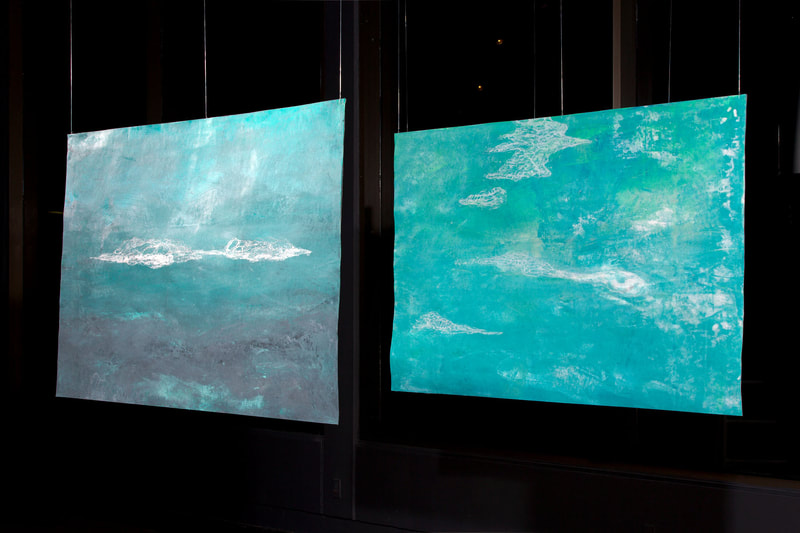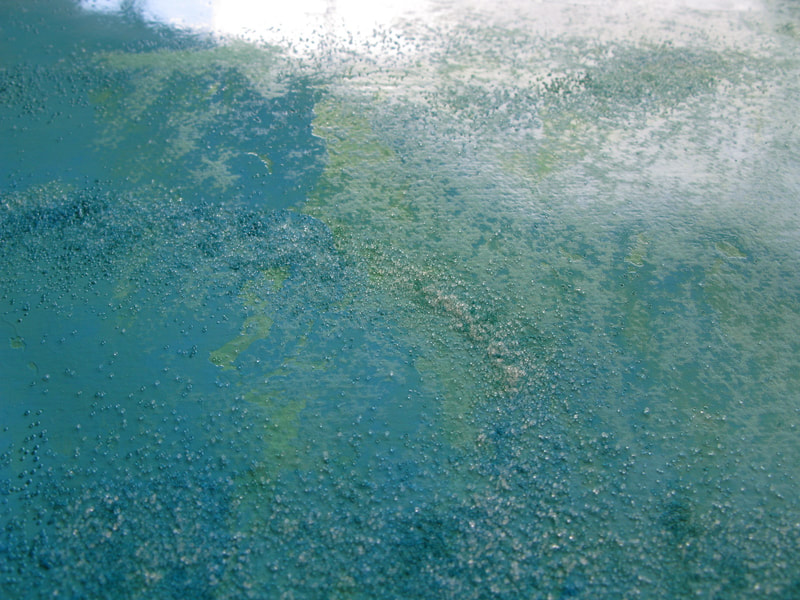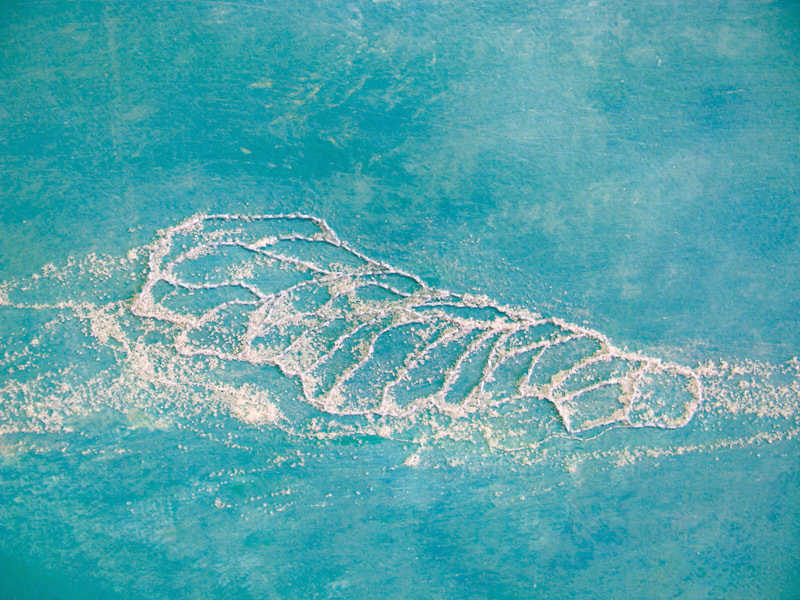|
Diasporic Waters (2014) When I created Diasporic Waters in 2014, the media was flooded with discussions of climate refugees and rising sea levels. The Carteret Islanders were already beginning to migrate to Bougainville primarily because their swamp taro was being inundated by salt water from increasing king tides. I became obsessed with rising sea levels and salt water, and in response I stitched islands made of salt on one side and on the back, islands that were submerged into the seascape. I focused on the Carteret Islands, Tuvalu and Kiribati because they were among the first nations being forced to migrate due to climate change. (Of course they were not the only, there were and continue to be many, many other island nations risking the loss of their ancestral homelands). I wanted to create islands that were larger than they are shown on traditional maps to ensure that they were no longer considered small places. However, at the time it did not occur to me that instead of focusing on climate refugees, I should have been thinking more deeply about solutions for the islanders to stay and to interrupt my own narratives of the disappearing native. It took the words of poet and climate justice activist Kathy Jetnil Kijiner to reconsider my position. Now when I look at this work, I see it more as a point of departure into the more complex realm of climate justice. In an effort to activate the gallery and openly discuss the impacts of climate change across Oceania, I invited my favorite Hawaiʻi based spoken word artists to perform within the UH Mānoa Art Gallery open to the community. Through the oral tradition of griot, each poet wove the lines of their poems into the next poet's lines each located in a different part of the gallery until the gallery was filled with Pacific voices from across the moana nui. |









